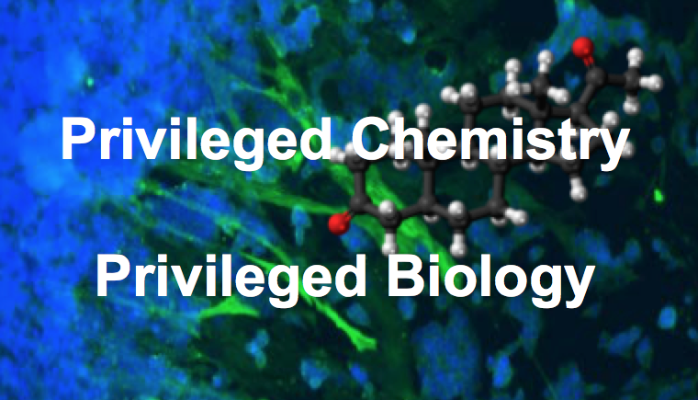Privileged Chemistry, Privileged Biology – Made for Each Other

The selection of chemical matter to be used for screening is a major discussion topic for phenotypic drug discovery (PDD) researchers. At the recent Keystone Symposium on PDD, several talks were presented on focused chemical libraries suitable for phenotypic screening. Herman Waldmann (Max Planck) made the case for smaller libraries enriched in natural-products inspired compounds, advocating for quality and relevance. Enrique Saez (Scripps) described the application of small, functionalized, fragment-based probe libraries in obesity research.
The costs associated with screening very large libraries in phenotypic assays have made the use of focused compound collections, designed around so-called “privileged structures” or privileged chemistry, of particular interest. Privileged structures in chemistry refer to certain structural motifs or scaffolds that are particularly useful as templates for medicinal drug discovery. The most useful structures are derived from natural products and small molecule metabolites, and tend to be rich in bioactivity. Indeed the tactic of allowing evolution and biology guide us in the design of chemical structure has a long and historical record of success in drug discovery.
For the biological systems used for phenotypic screening, assay systems that are particularly suitable for discovering new drugs may be thought of as having “privileged biology”. As described in a recent paper, assays having high physiological relevance, such as those that use human primary cell types, stem-cell derived cells, and/or patient cells, are preferred as they more closely model human biology. Such assays, in particular complex cell-based assays using co-cultures, 2D or 3D engineered matrices, may provide the greatest opportunity for increasing predictive validity and improving R&D productivity.
Combining both privileged chemistry and privileged biology, focusing both the chemistry and the biology in the areas of highest probabilities of success, may amplify this affect. As clinical programs advance, we will see how these approaches play out. We continue towards our goal of defining the path forward for modern PDD and supporting the economic viability of biopharmaceutical R&D.
Micrograph courtesy of Yu-Chih Hsu.






